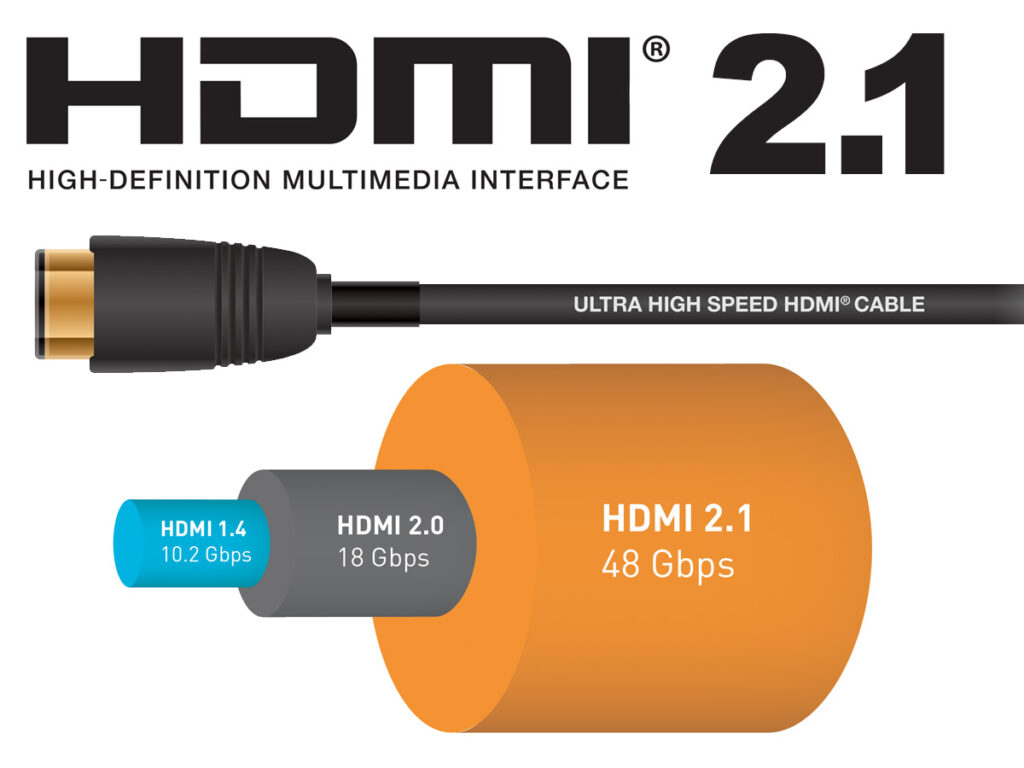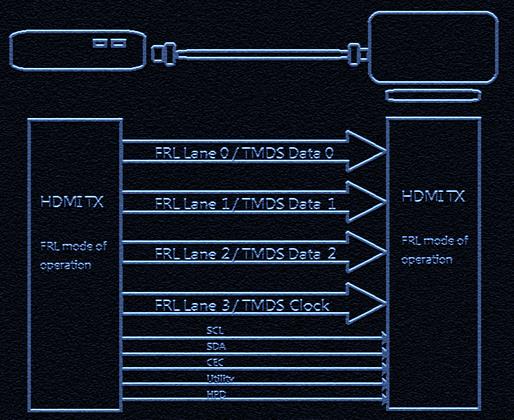

In the dynamic range, values are set for a group of frames or an individual frame. The difference is that in HDR static, the values were set for the entire video. In HDMI 2.0, support for static range has been implemented. But 60 and 120 frames per second only in compressed form Table of supported image formats and frame rates by HDMI standards Video Format What this gives in the first place it became possible to transmit 8K video over HDMI with a frequency of 30, 60.120 frames per second. Standard 2.0 supported 4K resolution and 60Hz maximum frame rate. The UHD standard supports frequencies up to 240 frames per second, but only in a compressed state. Support for video with a frame rate of 120 per second (120Hz) and 4K, 5K, 8K, 10K resolution.

According to the developers, the maximum length of the HDMI 2.1 cable is about 3 m.

The increase in throughput will occur due to the use of new signal transmission protocols, but a new cable with better shielding is needed. In turn, this means that the cable pinout has not changed. and vice versa, the HDMI 1.4 cable can be connected to the HDMI 2.1 port (the 2.1 port will work in 1.4 mode). The transfer rate has been increased from 18 Gb / s to 48 Gb / s, but to get all the benefits of HDMI 2.1 you need a new cable, backward compatibility is provided, which means the cable can be used in standards 2.0 and 1.4. For the production of chips supporting the HDMI 2.1 standard, it took a year and a half, and at the end of 2018, HDMI 2.1 ports were installed in new TVs In early 2017, the new HDMI standard was adopted, which received the designation HDMI 2.1.


 0 kommentar(er)
0 kommentar(er)
